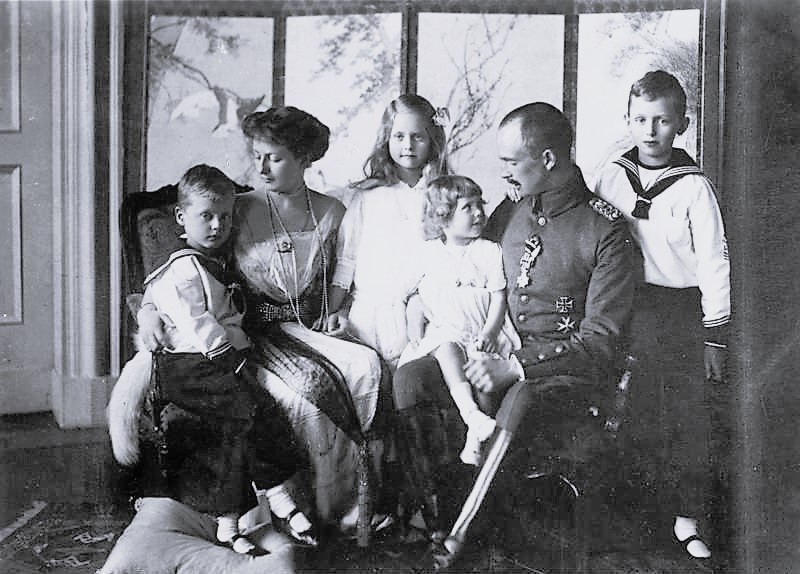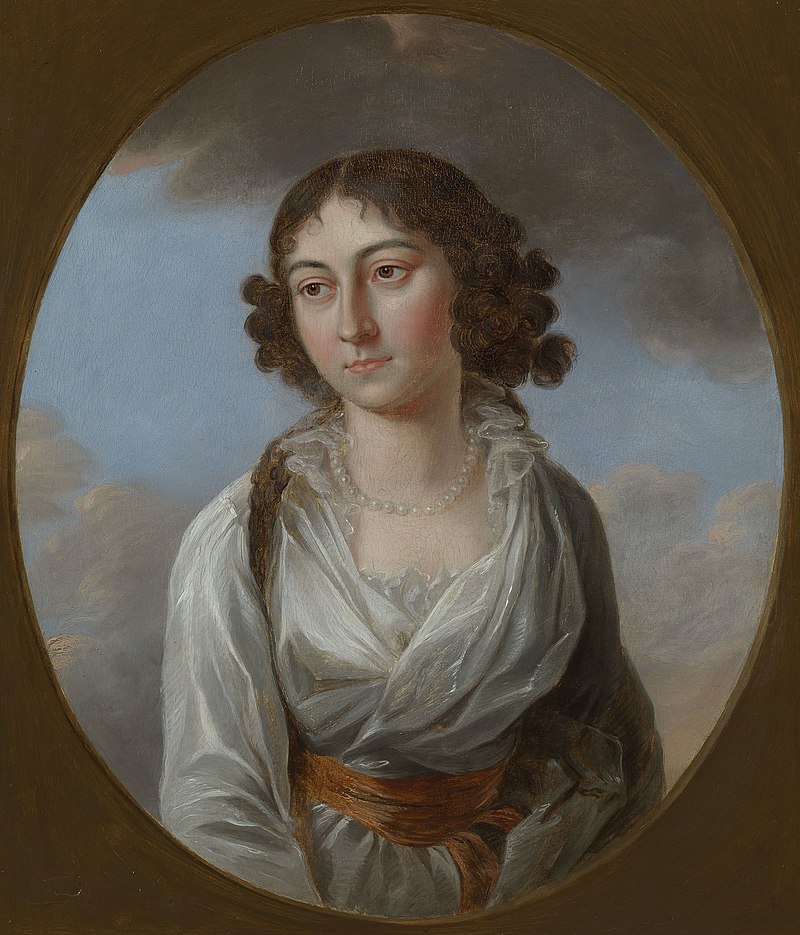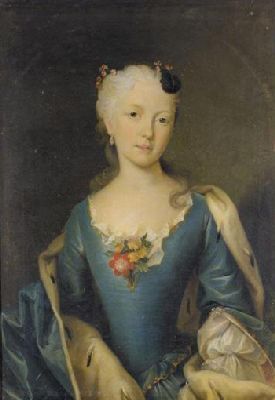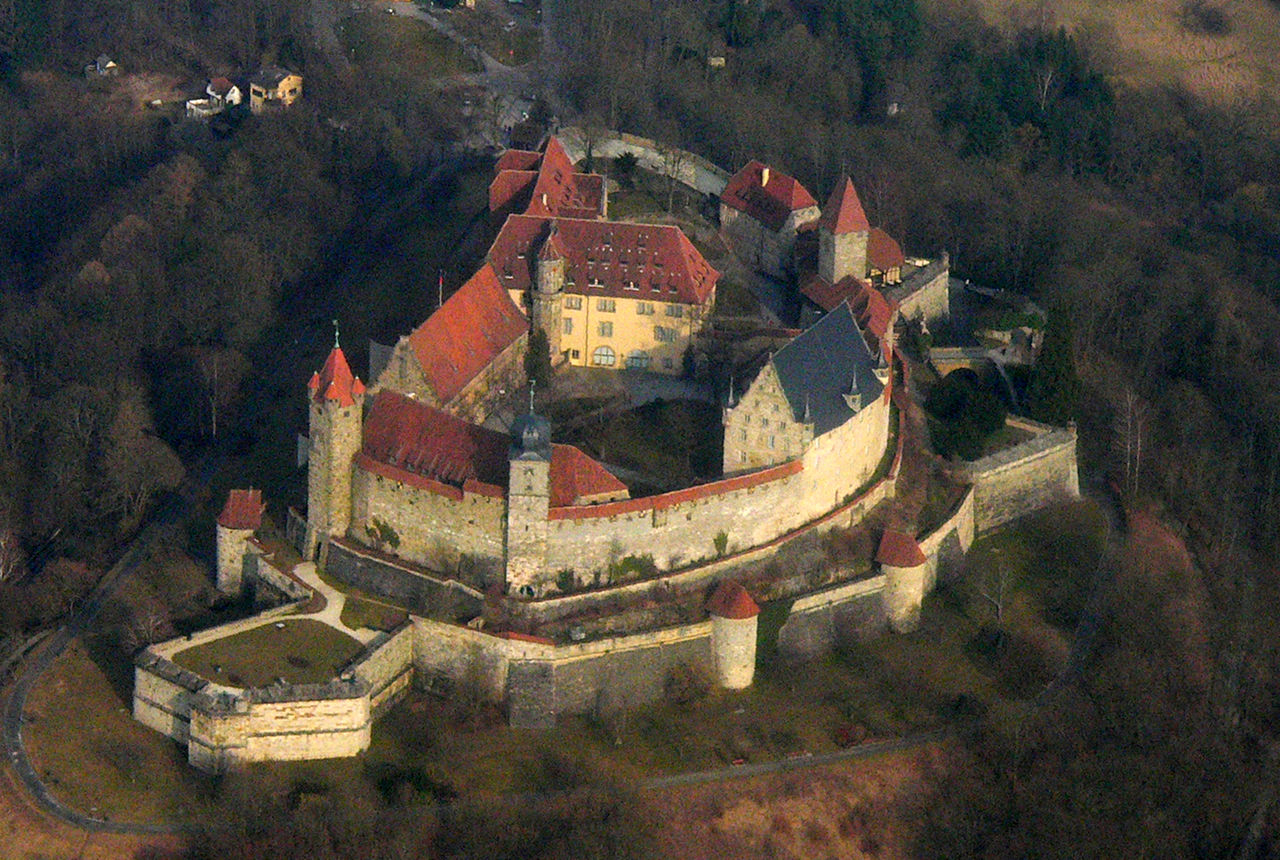by Susan Flantzer
© Unofficial Royalty 2019
The Head of the House of Saxe-Coburg and Gotha from 1954 until he died in 1998, Friedrich Josias was born at Callenberg Castle, now in Coburg, Bavaria, Germany on November 29, 1918. His birth occurred just three weeks after the Workers’ and Soldiers Council of Gotha, deposed his father as Duke of Saxe-Coburg and Gotha. His father signed a declaration relinquishing his rights to the throne but he remained Head of the House of Saxe-Coburg and Gotha. Christened Friedrich Josias Carl Eduard Ernst Kyrill Harald, he was the youngest of the five children and the youngest of the three sons of Charles Edward, Duke of Saxe-Coburg and Gotha and his wife Viktoria Adelheid of Schleswig-Holstein-Sonderburg-Glücksburg.
Friedrich Josias’ father was the posthumous son of Queen Victoria’s youngest son Prince Leopold, Duke of Albany. Therefore, Friedrich Josias was a great-grandchild of Queen Victoria. His mother was the daughter of Friedrich Ferdinand, Duke of Schleswig-Holstein-Sonderburg-Glücksburg and his wife Princess Karoline Mathilde of Schleswig-Holstein-Sonderburg-Augustenburg. His maternal grandfather was the eldest son of Friedrich, Duke of Schleswig-Holstein-Sonderburg-Glücksburg and a nephew of King Christian IX of Denmark. His maternal grandmother was a granddaughter of Princess Feodora of Leiningen, the half-sister of Queen Victoria from her mother’s first marriage.

Left to right: Prince Hubertus, the Duke of Saxe-Coburg and Gotha, Princess Caroline Mathilde, Prince Johann Leopold, Prince Friedrich Josias on the lap of the Duchess of Saxe-Coburg and Gotha and Princess Sibylla
Friedrich Josias had four elder siblings:
- Johann Leopold, Hereditary Prince of Saxe-Coburg and Gotha (1906 – 1972), married (1) Feodora, Baroness von der Horst, divorced 1962, had three children, unequal marriage, causing Johann Leopold to renounce his rights to be Head of the House of Saxe-Coburg and Gotha (2) Maria Theresa Reindl, no children
- Princess Sibylla of Saxe-Coburg and Gotha (1908 – 1972), married Prince Gustav Adolf of Sweden, Duke of Västerbotten, had five children including King Carl XVI Gustaf of Sweden whose middle name Hubertus is in honor of his uncle.
- Prince Hubertus of Saxe-Coburg and Gotha (1909 – 1943), unmarried, died in action during World War II
- Princess Caroline Mathilde of Saxe-Coburg and Gotha (1912 – 1983), married (1) Friedrich Wolfgang Otto, Count of Castell-Rüdenhausen, divorced 1938, had three children (2) Captain Max Schnirring, killed in an airplane accident in 1944, had three children (3) Karl Otto Andree, divorced 1949, no issue
Friedrich Josias was educated at home by tutors. He then attended the Casimirianum Coburg in Coburg, Bavaria, Germany from 1929 to 1934. He then attended the Schnepfenthal Salzmann School, a boarding school in Gotha, Germany, founded in 1784, graduating in 1938.
In 1938, Friedrich Josias joined the German Army and participated in the German occupation of Czechoslovakia in 1939. In 1941, he participated in the German occupation of Poland and France and fought in campaigns in Yugoslavia and the Soviet Union.
In 1932, Friedrich Josias’ elder brother Johann Leopold made an unequal marriage against the Saxe-Coburg and Gotha House Act of March 1, 1855, and had to renounce succession rights for himself and any children from the marriage. His brother Hubertus was designated the heir to his father as Head of the House of Saxe-Coburg and Gotha. However, after Hubertus was killed in action in an airplane crash during World War II in 1943, Friedrich Josias became the heir to Head of the House of Saxe-Coburg and Gotha.
In 1944, Friedrich Josias became an adjutant to Field Marshal Erwin Rommel who was in charge of the German campaign in North Africa. Later in 1944, he was transferred to the staff of General Hermann von Hanneken, the supreme commander of the German forces in Denmark. In May 1945, Friedrich Josias was captured by British forces in Denmark and remained in captivity until he was released that autumn when he returned to Coburg.
Friedrich Josias married his first cousin Countess Viktoria-Luise of Solms-Baruth on January 25, 1942. The couple divorced on September 19, 1946.
Friedrich Josias and Viktoria-Luise had one son who succeeded his father as the Head of the House of Saxe-Coburg and Gotha:
- Andreas of Saxe-Coburg and Gotha (born 1943), married Carin Dabelstein, had two sons and one daughter
On February 14, 1948, Friedrich Josias made a second marriage to Denyse Henriette de Muralt in San Francisco, California. The couple divorced in 1964 and had three children:
- Maria of Saxe-Coburg and Gotha (1949 – 2016), married Gion Schäfer, had two daughters
- Beatrice of Saxe-Coburg and Gotha (born 1951), married Friedrich-Ernst of Saxe-Meiningen, had one son and one daughter
- Adrian of Saxe-Coburg and Gotha (1955 – 2011), married (1) Lea Rinderknecht, had two sons (2) Gertrud Krieg
Friedrich Josias married one last time, on October 30, 1964, in Hamburg, Germany to Katrin Bremme. The couple had no children. His third wife Katrin survived him by twenty-three years, dying in 2011.
In 1946, Friedrich Josias went to Stockholm, Sweden. He stayed for a while with his elder sister Sibylla who was married to Prince Gustaf Adolf of Sweden, Duke of Västerbotten, the second in line to the Swedish throne after his father, the future King Gustaf VI Adolf. Prince Gustaf Adolf, the father of King Carl XVI Gustaf of Sweden, would have himself become King of Sweden had he not died tragically in an airplane crash in 1947. In Sweden, Friedrich Josias worked for Johnson Line AB, a Swedish shipping company.
In 1948, Friedrich Josias accepted a position with W.R. Grace and Company, another shipping company, in San Francisco, California, and later in Santos, Brazil, and Hamburg, Germany. As per his father’s wish, he ended his employment with W.R. Grace and Company to work for the Foundation of the Duke of Saxe-Coburg and Gotha family and the Duke of Saxe-Coburg and Gotha Foundation for Art and Science. When his father died in 1954, Friedrich Josias became Head of the House of Saxe-Coburg and Gotha.
From 1958 – 1964, Friedrich Josias again worked for the Swedish shipping company Johnson Line AB, this time in Buenos Aires, Argentina. Upon his return to Germany, he first lived in Hamburg. Beginning in 1967, he spent his time in Coburg, now in Bavaria, Germany, and Grein, Austria. During the last years of his life, Friedrich Josias was in ill health and his son Andreas took over many of his duties. He died on January 23, 1998, in a hospital in Amstetten, Austria at the age of 79 and was buried in the family cemetery in the forest of Schloss Callenberg in Coburg, Bavaria, Germany.

The Saxe-Coburg and Gotha family cemetery in the forest of Callenberg Castle; Credit – Wikipedia
This article is the intellectual property of Unofficial Royalty and is NOT TO BE COPIED, EDITED, OR POSTED IN ANY FORM ON ANOTHER WEBSITE under any circumstances. It is permissible to use a link that directs to Unofficial Royalty.
Works Cited
- De.wikipedia.org. (n.d.). Friedrich Josias Prinz von Sachsen-Coburg und Gotha. [online] Available at: https://de.wikipedia.org/wiki/Friedrich_Josias_Prinz_von_Sachsen-Coburg_und_Gotha [Accessed 28 Jan. 2019].
- En.wikipedia.org. (n.d.). Friedrich Josias, Prince of Saxe-Coburg and Gotha. [online] Available at: https://en.wikipedia.org/wiki/Friedrich_Josias,_Prince_of_Saxe-Coburg_and_Gotha [Accessed 28 Jan. 2019].
- Thepeerage.com. (2019). Person Page. [online] Available at: http://www.thepeerage.com/p10859.htm#i108581 [Accessed 28 Jan. 2019].









































